By Elena del Valle
Photos by Gary Cox
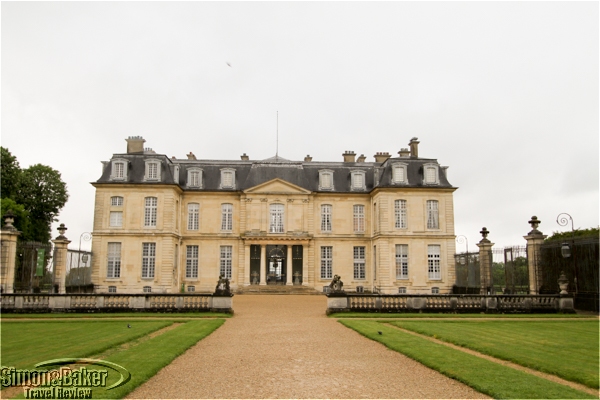
Champs-sur-Marnes on a cloudy rainy day
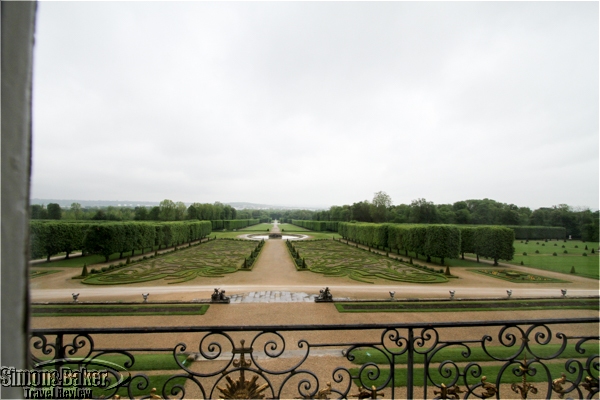
A view of the Notable Gardens, inspired by Le Notre’s work, from the second floor
We liked visiting the Château de Champs-sur-Marne (31 rue de Paris 77420 Champs-sur-Marne +33160052443. www.chateau-champs-sur-marne.fr, champs@monuments-nationaux.fr) in the Seine-et-Marne Department (www.turisme77.co.uk and www.paris-whatelse.com) in the town of Champs-sur-Marne near Paris, France. A private home in the eighteenth century the property was completed in 1708. It was managed by the Centre des Monuments Nationaux, a government entity. Champs-sur-Marne is within an 85 hectare estate in the town of the same name, about 25 minutes from Paris by public transportation (RER A) and a 30 minute drive via highway A4.
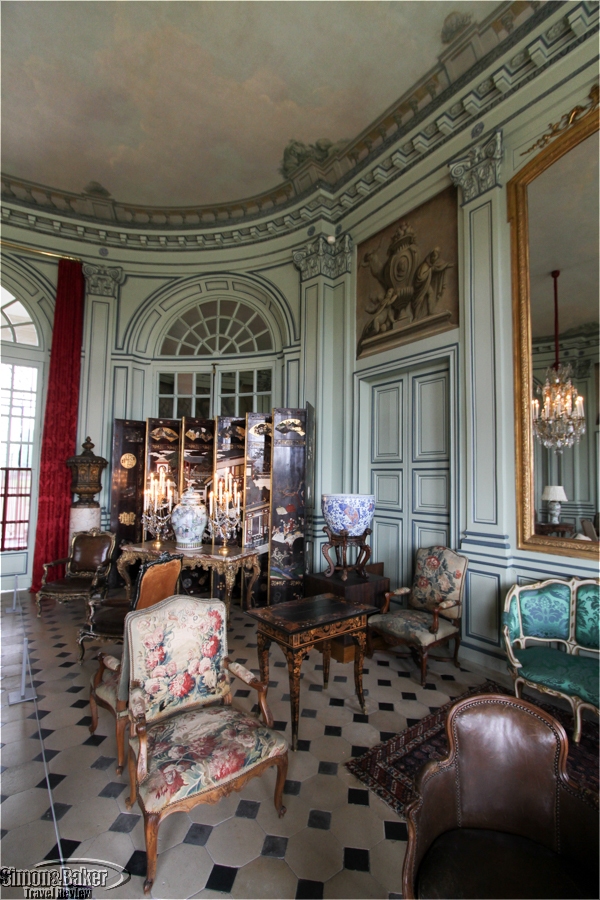
The furniture in the entry hall
The 16 room two story structure stood out for its rococo style and its Notable Gardens, inspired by Le Notre’s work and restored in 1895. Because of rainy and cold weather we missed visiting the gardens. In its heyday the Castle of Champs-sur-Marne welcomed illustrious tenants such as the princess of Conti, duke de La Vallière, and la Marquise de Pompadour. In 1895, Louis Cahen d’Anvers, a banker, bought and restored the property, and in 1935, the Cahen d’Anvers family donated the property to the state. About 1,800 square meters of the 3,600 square meter large property were open to visitors, including the second floor and basement.
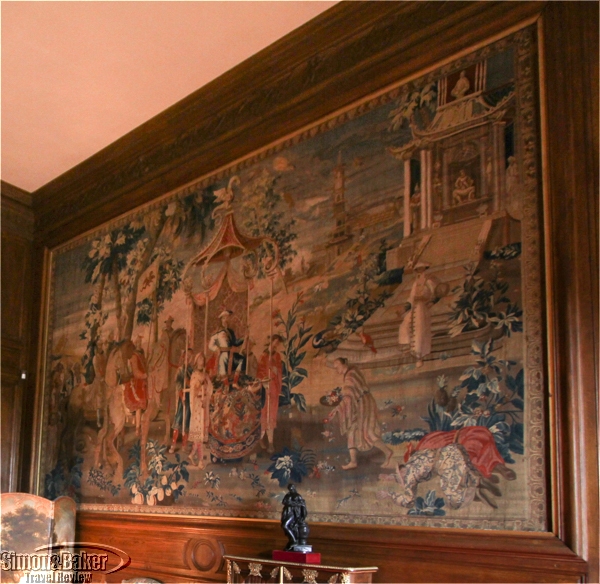
Asian style decor was popular despite a lack of accurate information about the subject matter.
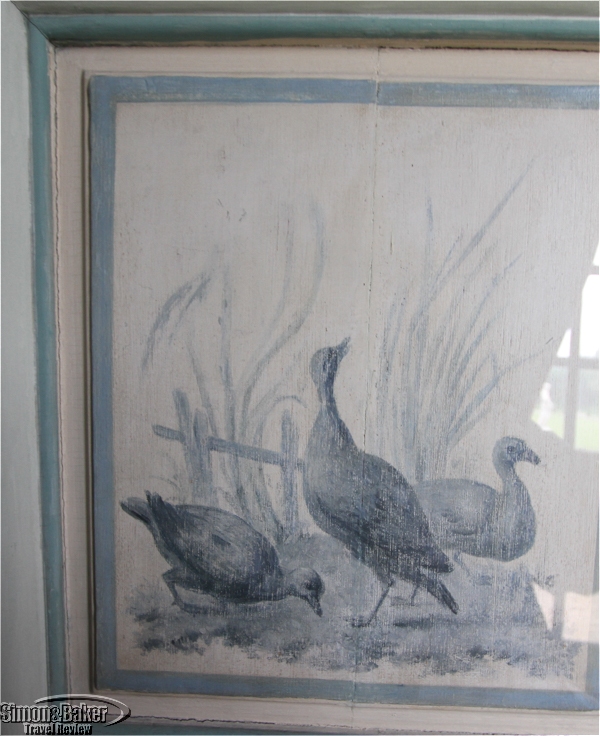
A glass covered close up where the removal of paint revealed further paintings underneath
During our visit to the Seine-et-Marne the Château de Champs-sur-Marne served as a contrast to other larger and far more pompous properties such as the Chateau de Fontainebleau, the former royal homestead, and Vaux-le-Vicomte, the famous precursor to Versailles. Like Vaux-le-Vicomte, Champs-sur-Marne served as a model for another well known property, the Elysee Palace in Paris completed in 1720. The north facade’s special feature, the rotunda, is similar to the one at the Hôtel de Matignon, the official residence of the first minister.
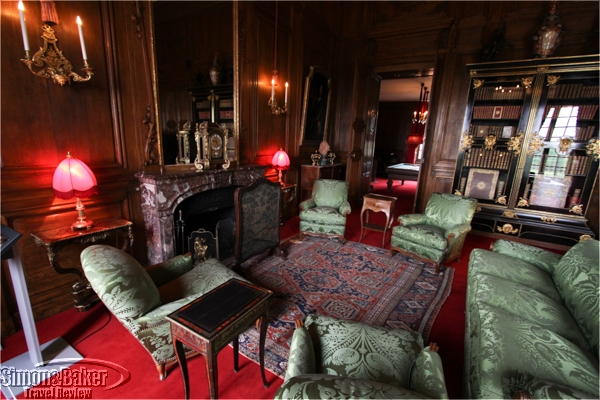
One of the rooms appeared inviting
The Château de Champs-sur-Marne was built as the home of a newly wealthy family wishing to impress society, whereas the other two area properties were designed for the public as well as private life of their affluent residents. A staff of 37 looked after the property. In 1959, President Charles de Gaulle began using it as an official residence for government guests. In 1974, the Ministry of Culture took over management of estate, allowing the public to visit the castle and its grounds. In 2006, parts of the Chinese Salon ceiling collapsed, requiring a six year long restoration. Although it was reopened in 2013 it looked like it could use additional work.

The rooms were decorated according to purpose with light colors for women or mixed groups.
If the Château de Champs-sur-Marne looked familiar, our English speaking guide explained, it was because a number of films were shot on the estate, including Dangerous Liaisons (1987) by Stephen Frears, Ridicule (1995) by Patrice Leconte, and Marie-Antoinette (2005) by Sofia Coppola.The orangery of the castle also appeared in the series Versailles (2016) by Jalil Lespert.
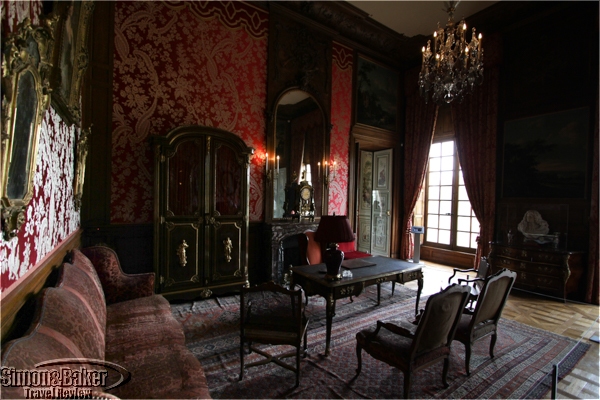
The dark rooms were offices and places for men to gather.
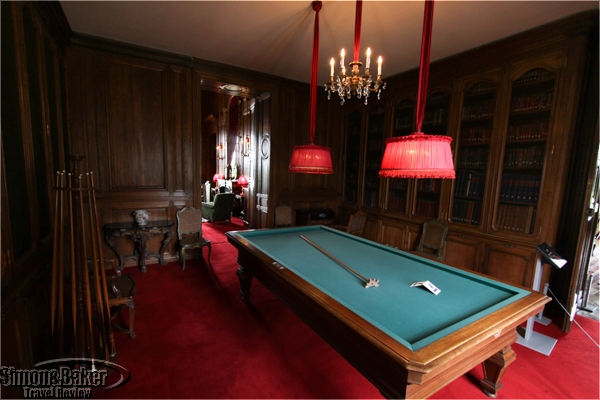
The billiards room
Our guide especially noted the chinoiseries painted decorations and the door panel (in the Cabinet Camaïeu) by Christophe Huet, among the highlights of the era. Other noteworthy features included, in the great hall, the Coromandel screen from the 18th century restored in 2016; faience pieces from the 18th century in various rooms as well as exceptional pendulums, for example, the pendulum Tête de Poupée by Jacques Auguste Thuret, clockmaker to the King Louis XIV in 1694 in La Chambre Grise; and “le Bonheur-du-jour” signed Charles Topino in the 18th century, a desk for the ladies.









